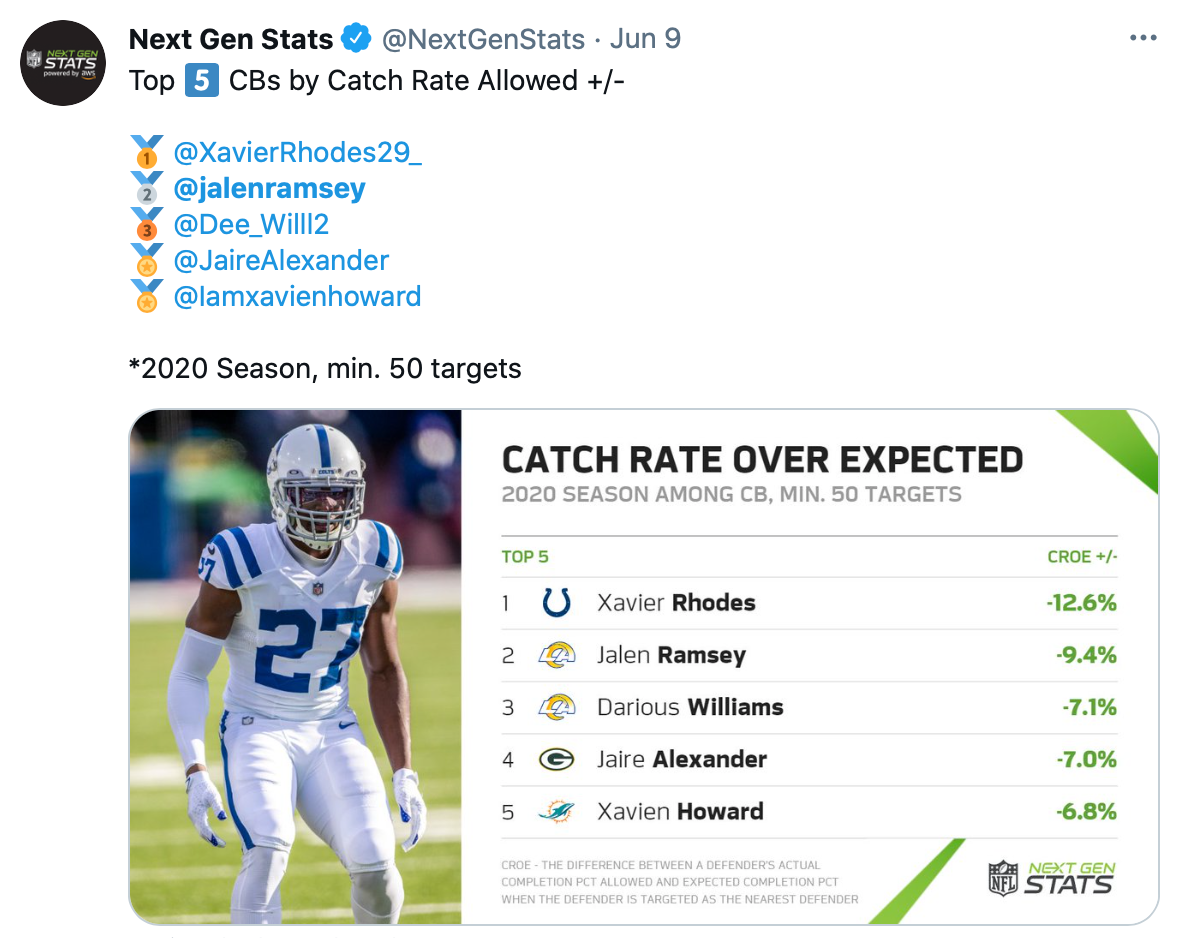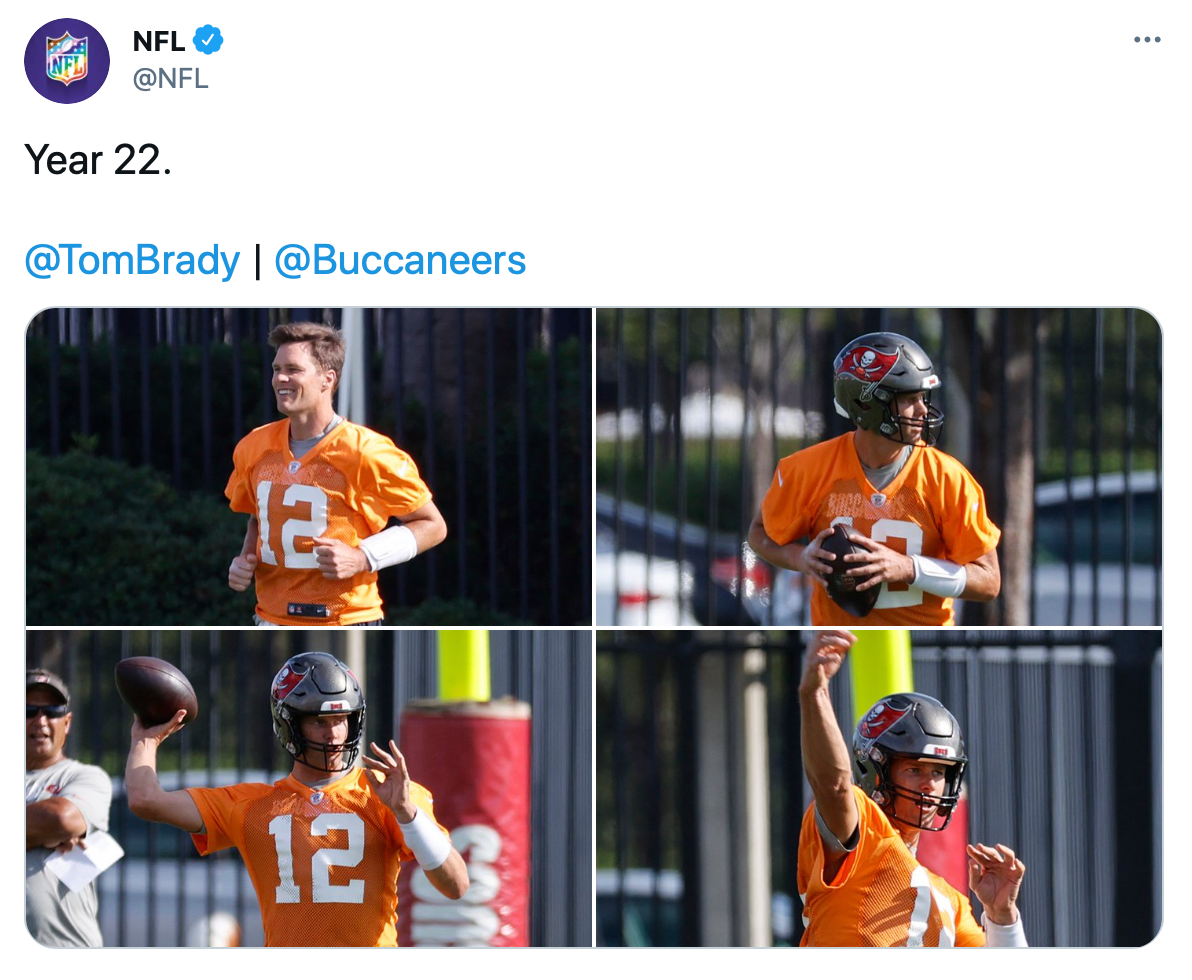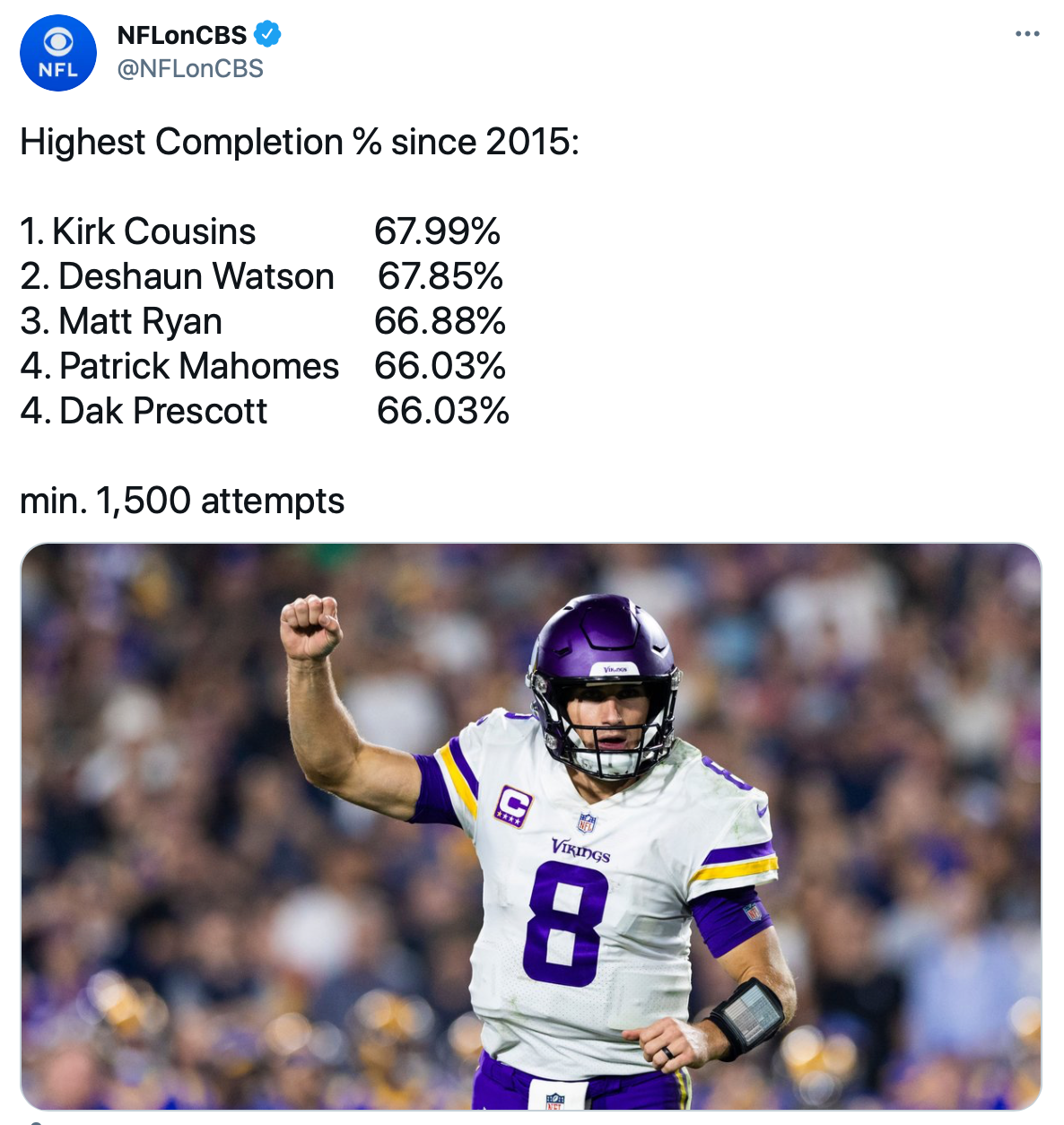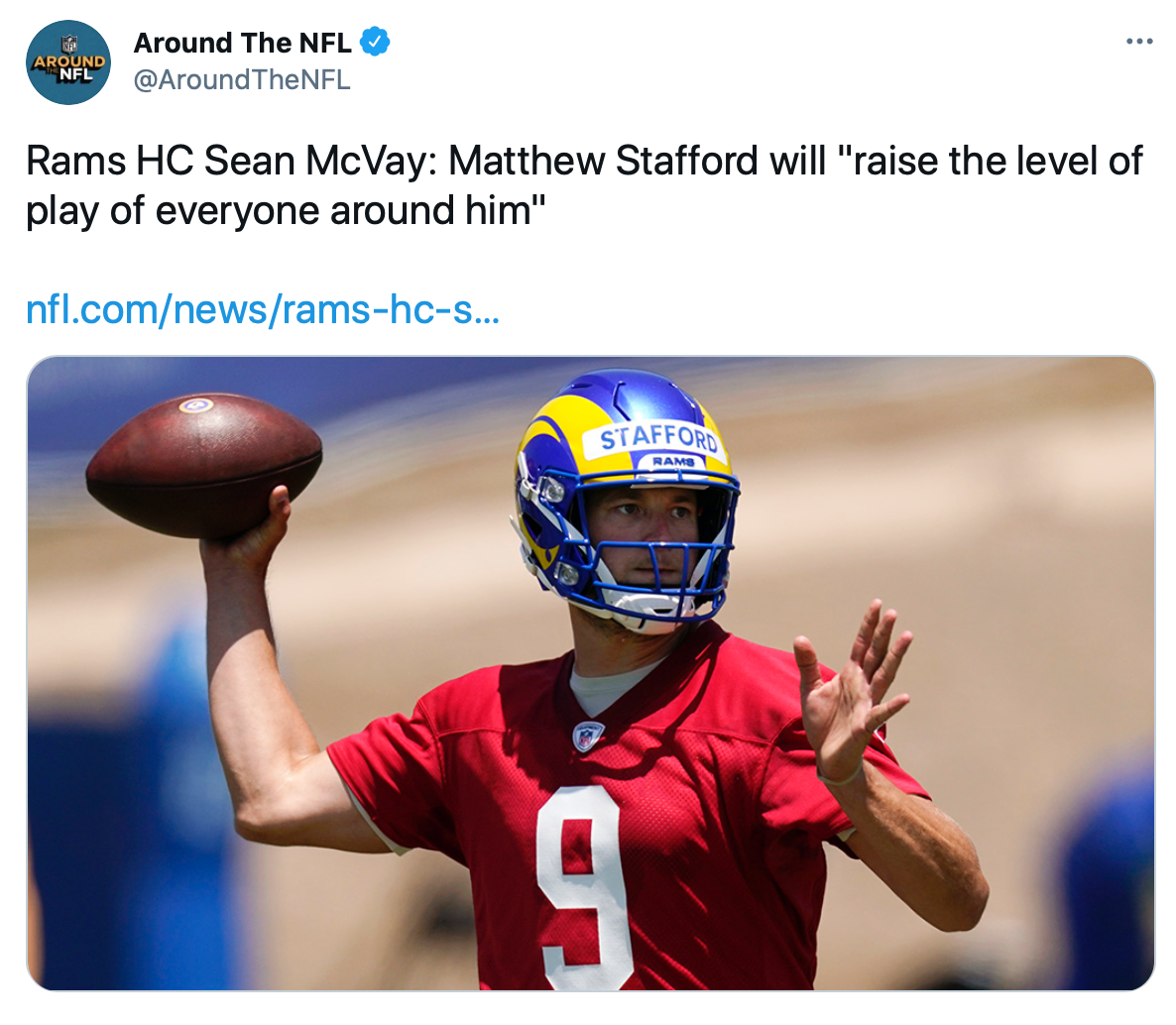Early every NFL in-season Tuesday morning, our grind begins with a collection of the previous week’s statistics. Even if your spreadsheets are perfectly constructed, only requiring a plug-in of the numbers, the process can take a full day to complete. That stretch of time is easily duplicated for those, like me, who operate within the world of college football.
Guess what? It’s Thursday morning, the first NFL matchup of the new week is merely hours away, and we’ve yet to even begin evaluating the matchups. Since we have every intention of getting our entries constructed, submitted into each of the early offerings from our favorite DFS platforms, there simply must be steps we can take early on to jump ahead of the curve. Lucky enough for us, we can take several steps during the offseason to reduce the amount of prep work to complete on those hectic Thursdays.
Short of direct plug-and-play of the numbers from our data providers, there’s nothing we can do about the statistical collection process. But I actually value that process. It’s an opportunity for me to catch many of the performances I’ve unintentionally overlooked from the previous week. However, since we have already been provided with the entire 18-week NFL schedule, nothing stands in our way from taking a deep dive into the individual coverage matchups. Not to be confused with a general strength of schedule review, this series will identify the individual passing game contributors facing either the most explosive or least appealing matchups throughout the season. If your desire is a big-picture review of schedule strength, you will find an outstanding, thorough breakdown of each position based upon determined strength of schedule provided by Scott Barrett inside the following links: QB | RB | WR | TE.
The Basic Approach
The first order of business is accounting for the defensive coordinator (DC) turnover. A massive 44% of the DCs from last season have been replaced. Seven (22%) were forced out, four (13%) were lured to positions on new teams, and three (9%) voluntarily resigned or retired. For those teams hiring new DCs, we will need to wait until the first few weeks of the season have been played before we can draw a concrete understanding of their expected schemes. However, as the old saying goes: the tiger cannot change his stripes. Each of these newly hired DCs provide us with a paper trail of previous usage. Either as a position coach or coordinator, these newly installed DCs have already provided us with the framework we need for the purpose of tentatively evaluating the matchups. The first step, pulling from the defensive scheme history from every DC, involved collecting the three most-used coverage shells.
With a total of 272 games on the 2021 schedule, the 544 combined matchups for each team’s anticipated starting QB, WR1, WR2, WR3, and TE would be analyzed. That’s a grand total of 2,720 matchups. The next step involved recording the three coverage strengths, one weakness for each of those players. Whenever possible, each “strength” and “weakness” was determined based on the previous three seasons of play. Therein lies an issue of note. We certainly do not want to exclude the players with less than three years of NFL play. For the rookies without a single game of action, the coverage strengths and weaknesses were pulled from college data. For the NFL sophomores, the data was drawn directly from those who submitted a complete/nearly complete season of data (i.e., Justin Herbert, Justin Jefferson, etc.). But the college numbers were again used for those failing to provide reliable data from their rookie seasons. Finally, for the few NFL veterans with, for whatever reason, limited action during the last three seasons (i.e., Tyrod Taylor, etc.), every attempt was made to fill in the blanks using information prior to the last three years.
The next step involved highlighting the player matchups on both ends of the spectrum. The most exceptional of matchups received a green highlight in each of his three coverage strengths. The preliminary matchups to avoid would be facing a defense featuring their coverage scheme weakness without a single shell of strength. However, for each of the receivers evaluated, another step was required. The tiny detail of shadow threats would need to be factored. A receiver may be facing all three of his coverage scheme strengths, but drawing a coverage trail from a defender such as Jalen Ramsey or Bradley Roby would entirely squash those expectations.
For in-depth information on each of the most important defensive coverage schemes, make sure you check out the following links: Coverage Glossary | Cover 1 | Cover 2 | Cover 3 | Cover 4.
The “Perfect” QB Matchups
As you can see in the list below, we are not provided with a single “perfect” offering in some weeks, and, in others, we see multiple. Keep in mind, beyond a QB playing his best ball vs. a specific coverage scheme, he was simply gifted with these matchups from the NFL schedule construction. If you take a step back, truly evaluate the circumstances, it’s rather eye-opening how scheduling “luck” can play such a drastic role in production. Without further delay, here is the list:
| Week | Team | QB | Opponent |
| 2 | Tampa Bay | Tom Brady | Atlanta |
| 3 | L.A. Rams | Matthew Stafford | Tampa Bay |
| 4 | Houston | Tyrod Taylor | Buffalo |
| 4 | New England | Cam Newton | Tampa Bay |
| 6 | Tennessee | Ryan Tannehill | Buffalo |
| 7 | Philadelphia | Jalen Hurts | Las Vegas |
| 8 | Kansas City | Patrick Mahomes | N.Y. Giants |
| 8 | Minnesota | Kirk Cousins | Dallas |
| 8 | New Orleans | Jameis Winston | Tampa Bay |
| 10 | Tennessee | Ryan Tannehill | New Orleans |
| 11 | Tampa Bay | Tom Brady | N.Y. Giants |
| 12 | Miami | Tua Tagovailoa | Carolina |
| 12 | Seattle | Russell Wilson | Washington |
| 13 | Tampa Bay | Tom Brady | Atlanta |
| 14 | Denver | Teddy Bridgewater | Detroit |
| 15 | New Orleans | Jameis Winston | Tampa Bay |
| 16 | L.A. Chargers | Justin Herbert | Houston |
| 16 | L.A. Rams | Matthew Stafford | Minnesota |
| 17 | Tampa Bay | Tom Brady | N.Y. Jets |
Some liberties were obviously taken in projecting the victor of certain position battles that have yet to be decided. The obvious name in the above table that stands out is Jameis Winston. For all we know, Taysom Hill may be the guy. We’ll cross that bridge when we get there. We see several QBs with repeated entries, including Winston, Matthew Stafford, Ryan Tannehill, and Tom Brady. However, none of the QBs or receivers evaluated came away with as many (four) impeccable matchups as the G.O.A.T. (Brady). It’s certainly true that Brady will have his work cut out for him in matchups facing the Rams and Bears, but the writing is on the wall for another outstanding season of production for the soon to be 44-year-old.
Additional Prime QB Matchups of Note
Let’s make sure it’s understood that some QBs only need a defense to employ a single coverage scheme to their liking to explode for a monster fantasy day. If I’m being picky, the QB type that I fall head-over-heels for are those that destroy the Cover 1 and Cover 3 combo defenses. Why? NFL defenses employed the two schemes on a combined 53% of all plays last season. The best QBs facing these schemes are provided with a distinct rate advantage that is very unique within this scope of the game. Here is a list of the matchups fitting the profile for those QBs:
| Week | Team | QB | Opponent |
| 1 | Minnesota | Kirk Cousins | Cincinnati |
| 1 | Tennessee | Ryan Tannehill | Arizona |
| 2 | Minnesota | Kirk Cousins | Arizona |
| 3 | Cincinnati | Joe Burrow | Pittsburgh |
| 4 | Cincinnati | Joe Burrow | Jacksonville |
| 4 | Tennessee | Ryan Tannehill | N.Y. Jets |
| 5 | Tennessee | Ryan Tannehill | Jacksonville |
| 8 | Cincinnati | Joe Burrow | N.Y. Jets |
| 9 | Minnesota | Kirk Cousins | Baltimore |
| 12 | Tennessee | Ryan Tannehill | New England |
| 14 | Tennessee | Ryan Tannehill | Jacksonville |
| 14 | Minnesota | Kirk Cousins | Pittsburgh |
| 15 | Tennessee | Ryan Tannehill | Pittsburgh |
| 17 | Tennessee | Ryan Tannehill | Miami |
One only needs to see a defense field a top-15 rate of Cover 1 for Kirk Cousins to come into the conversation as a top-five QB play. Over the last three seasons, Cousins has produced 0.63 FPs/DB (1st among all QBs) — a 38% increase over his average, a 123.6 passer rating (1st), 17 TDs-to-1 INT, and a 25% increase in air yards/attempt. Submitting a truly amazing post-Age 30 explosion, Ryan Tannehill is the best QB in the NFL at attacking defenses employing top-15 rates of Cover 1 and Cover 3.
And let’s not forget about Joe Burrow. He may not have enjoyed the same third-level attacking success that he did with LSU in 2019, but his rookie season work should have everyone excited for his future. He just missed out on being ranked within my top-five Cover 1 QBs — he ranks 6th, but his patience to attack what defenses give him is truly outstanding.
The next grouping of QBs, the prime matchups they’ll face that I want to highlight are those that are definitely not as obvious as those above:
| Week | Team | QB | Opponent |
| 1 | Las Vegas | Derek Carr | Baltimore |
| 2 | Denver | Teddy Bridgewater | Jacksonville |
| 3 | Denver | Teddy Bridgewater | N.Y. Jets |
| 3 | Las Vegas | Derek Carr | Miami |
| 4 | Denver | Teddy Bridgewater | Baltimore |
| 6 | Cleveland | Baker Mayfield | Arizona |
| 9 | Cleveland | Baker Mayfield | Cincinnati |
| 10 | Cleveland | Baker Mayfield | New England |
| 12 | Cleveland | Baker Mayfield | Baltimore |
| 15 | Denver | Teddy Bridgewater | Cincinnati |
| 18 | Cleveland | Baker Mayfield | Cincinnati |
This is a grouping of QBs that I am far more excited to employ in DFS than in season-long formats. We see a second QB name who has yet to actually win his team’s starting role: Teddy Bridgewater. Far from perfect, lacking anything resembling arm strength, it’s a little-known fact that Bridgwater is one of the best in business when opposed by a Cover 1. He may not be able to attack a defense effectively beyond 25-to-30 yards, but he would certainly have an impressive cast of talented receivers at his disposal should he carry the starting role into the listed quartet of matchups.
Next, we have Derek Carr in two early-season matchups with Miami and Baltimore. It’s the high rate combination of Cover 1 and Cover 0 (all-out-blitz) from these defenses that have me excited. Carr is another QB lacking much in the way of arm strength. But, say what you will about his rookie season, Carr will have one of the top Cover 0 WRs in the NFL entering his sophomore season (Henry Ruggs III) when he faces the two highest Cover 0 rates in the league.
Finally, we come to Baker Mayfield. He’s fallen short of expectations for a former No. 1 overall NFL draft selection, but he has been a hell of a handful for Cover 1 defenses. As you can see, Mayfield will face off against teams employing Cover 1-heavy schemes in six of his final 12 games. Keep in mind, those don’t even include matchups with Pittsburgh (Weeks 8 and 17) or Detroit (Week 11) who employ Cover 1 as its secondary scheme. It’s a reality that should favor the selection of Mayfield in redraft formats, and also one to keep in mind when we are evaluating Mayfield prior to next season.
The tables provided obviously do not cover the full extent of excellent matchups. Another of the reliable QB matchup targets are those between the best vs. Cover 2, facing the defenses with the highest rates of Cover 2:
| Week | Team | QB | Opponent |
| 1 | Jacksonville | Trevor Lawrence | Houston |
| 4 | New Orleans | Jameis Winston | N.Y. Giants |
| 6 | Indianapolis | Carson Wentz | Houston |
| 6 | L.A. Rams | Matthew Stafford | N.Y. Giants |
| 8 | L.A. Rams | Matthew Stafford | Houston |
| 9 | New Orleans | Jameis Winston | Atlanta |
| 10 | L.A. Chargers | Justin Herbert | Minnesota |
| 12 | Jacksonville | Trevor Lawrence | Atlanta |
| 13 | Indianapolis | Carson Wentz | Houston |
| 14 | L.A. Chargers | Justin Herbert | N.Y. Giants |
| 15 | Chicago | Andy Dalton | Minnesota |
| 15 | Jacksonville | Trevor Lawrence | Houston |
| 17 | Chicago | Andy Dalton | N.Y. Giants |
| 18 | Chicago | Andy Dalton | Minnesota |
| 18 | New Orleans | Jameis Winston | Atlanta |
We really need to see some actual NFL results from Trevor Lawrence before we get too awfully excited about coverage matchups. As I’ll explain later, Andy Dalton will be extremely lucky to hold onto the starting role after a brutal opening stretch. Should he overcome those obstacles, Dalton will pack along truly elite Cover 2 attacking skills for a trio of late-season, outstanding matchups. Another QB who will need to find early success to hold onto his starting role, the Colts have future draft stock on the line if they decide to utilize Carson Wentz as their continual starter. A pair of matchups with Houston offer the Cover 2 schemes where Wentz has formulated a history of success. The final three names on the list (Matthew Stafford, Justin Herbert, and Jameis Winston) find themselves in situations destined for success. But each of these QBs are obvious gamers, with obvious playmakers bolstering their chances at success.
The Avoid List
To reiterate the criteria for a weekly matchup to avoid, these are the QBs facing a defense that not only includes their glaring coverage weakness and are void of featuring any of their scheme strengths. As with the matchups to target, this list is far from exhaustive. It simply highlights the matchups where we need to think long-and-hard in favor of avoiding:
| Week | Team | QB | Opponent |
| 1 | Miami | Tua Tagovailoa | New England |
| 1 | Seattle | Russell Wilson | Indianapolis |
| 2 | Washington | Ryan Fitzpatrick | N.Y. Giants |
| 3 | Chicago | Andy Dalton | Cleveland |
| 3 | Tampa Bay | Tom Brady | L.A. Rams |
| 3 | Tennessee | Ryan Tannehill | Indianapolis |
| 5 | Chicago | Andy Dalton | Las Vegas |
| 6 | Houston | Tyrod Taylor | Indianapolis |
| 7 | Indianapolis | Carson Wentz | San Francisco |
| 7 | Tampa Bay | Tom Brady | Chicago |
| 8 | Tennessee | Ryan Tannehill | Indianapolis |
| 9 | Las Vegas | Derek Carr | N.Y. Giants |
| 10 | Minnesota | Kirk Cousins | L.A. Chargers |
| 11 | Baltimore | Lamar Jackson | Chicago |
| 11 | Buffalo | Josh Allen | Indianapolis |
| 11 | Dallas | Dak Prescott | Kansas City |
| 12 | Washington | Ryan Fitzpatrick | Seattle |
| 13 | Houston | Tyrod Taylor | Indianapolis |
| 15 | Baltimore | Lamar Jackson | Green Bay |
| 16 | Green Bay | Aaron Rodgers | Cleveland |
| 16 | Houston | Tyrod Taylor | L.A. Chargers |
| 16 | New Orleans | Jameis Winston | Miami |
| 17 | Baltimore | Lamar Jackson | L.A. Rams |
| 17 | Denver | Teddy Bridgewater | L.A. Chargers |
| 17 | New England | Cam Newton | Jacksonville |
| 18 | Miami | Tua Tagovailoa | New England |
| 18 | New England | Cam Newton | Miami |
| 18 | Washington | Ryan Fitzpatrick | N.Y. Giants |
It’ll be tough to sit a few of these names in season-long formats. Unless you have the luxury of a studly backup QB, you should not consider sitting your star QB. However, in DFS, even with slightly depressed salaries, every single entry on this list should be avoided at all costs. One final note, you can clearly see that Andy Dalton will face a pair of cringeworthy matchups — based upon his history — in Weeks 3 and 5. He’ll need to see quite a bit of luck to avoid from having Justin Fields replace him as the starter.
Employing the Information
Everything depends on the format. As I’ve already stated, you want to start your studs in season-long formats unless you happen to have a top backup option. By the conclusion of this series, you will already have a leg up in preparation over the massive DFS population. Keep in mind, these QBs have provided compelling data over a considerable stretch of action, and have either proven to have mastered or failed facing the specific coverage types. But why have these QBs succeeded/failed? Three main factors help to answer that question:
- Pre-Snap Reads to Identify the Scheme
- Passing Lanes Provided by Pocket Manipulation
- Arm Talent: Accuracy and/or Arm Strength
Make no mistake, coverage schemes are not gimmicks, they determine the scoring of every single (non-kicking) fantasy point scored in football. Teams either have a QB able to identify and attack, or your offense falls flat on its face. Our fantasy squads mirror those alternatives.











